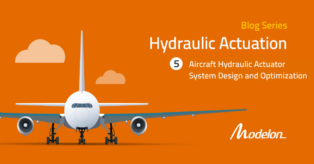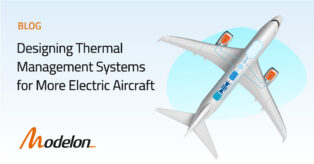Aircraft Landing Gear Design: Model and Simulate Aircraft Landing in Varying Conditions
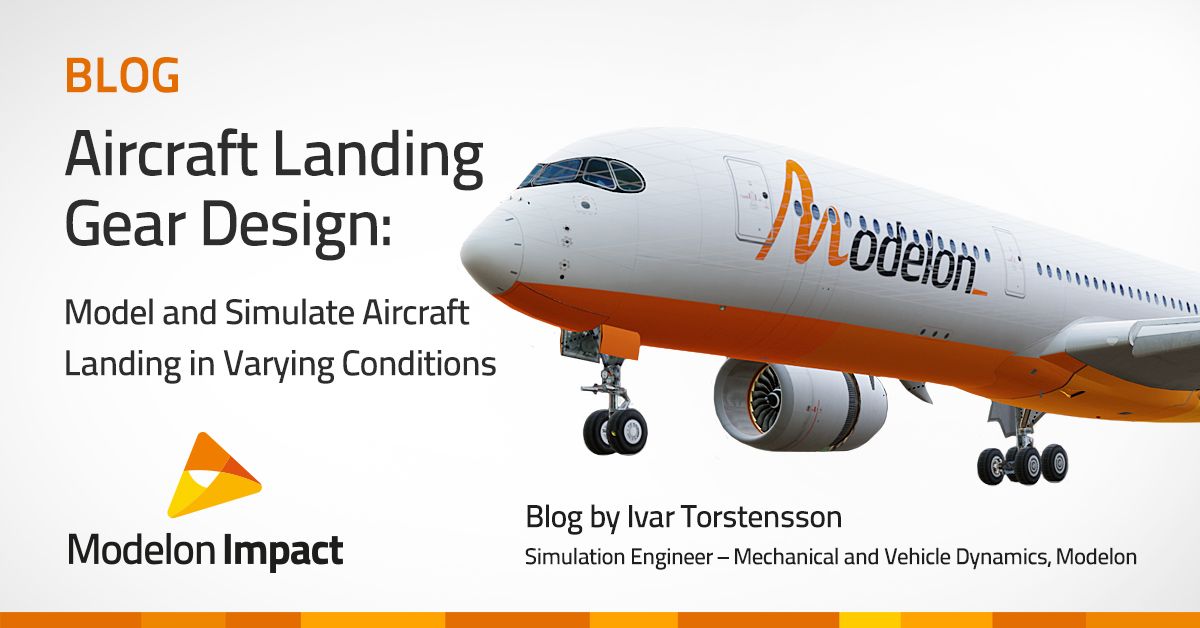
This blog focuses on building and designing aircraft landing gear using Modelon Impact, and the integrated Aircraft Dynamics Library (ADL).
The aircraft landing gear is a crucial part of an airplane. Landing gear must bear the weight of the vehicle at the sudden application of load during landing while being as compact as possible. Testing and validating these critical points of control and impact can be done with Modelon Impact.
Aircraft Landing Gear Design
When designing the landing gear of a commercial aircraft, aviation engineers need to consider two key aspects.
- Retracting Kinematics – An aerospace engineer needs to consider the retracting kinematics so that the landing gear can be stowed. The aircraft landing gear must satisfy several constraints from the aircraft system, such as maximum take-off weight, wing thickness, and engine size, all affecting the landing gear weight, size, and packing.
- Ground Stability – An aerospace engineer needs to consider the interaction between the tires and the tarmac. As being one of the few non-redundant load-bearing parts in an aircraft, it is extremely important that they function well during a variety of conditions.
Modelon Impact enables industry experts to construct landing gear models – helping with design decisions early and studying the aircraft as a complex system at a reasonable cost.
Landing Gear Component Modeling and Simulation
Modelon’s Aircraft Dynamics Library integrated in Modelon Impact enables users to include landing gear systems in the aircraft design optimization process. The Modelica-based library follows the same paradigm present in all Modelon’s model libraries with templates and interfaces defining the high-level functionality and interaction between subsystems. This hierarchical template structure allows a user to change predefined components for placeholders like the wheels, bogies, or even complete landing gear. The Aircraft Dynamics Library comes with a set of ready-made parts that fit in the landing gear template or can be used as a starting point for defining customized components.
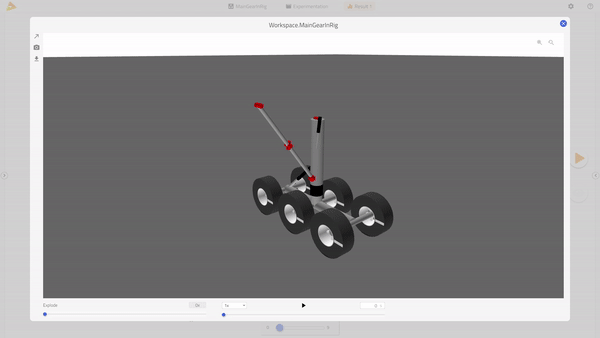
The retracting landing gear simulation uses a three dual wheels in tandem gear model created in Modelon Impact using the Standard gear template by filling in the linkage, damper, and bogie placeholder. The damper characteristics are added with 1-D force elements (linear spring and damper) providing an easily parameterized force response. This can easily be changed to a more refined model later on if the model needs more detail for certain analyses, e.g., adding compliance to the landing gear. A signal interface is added so the linkage can be retracted and extended.
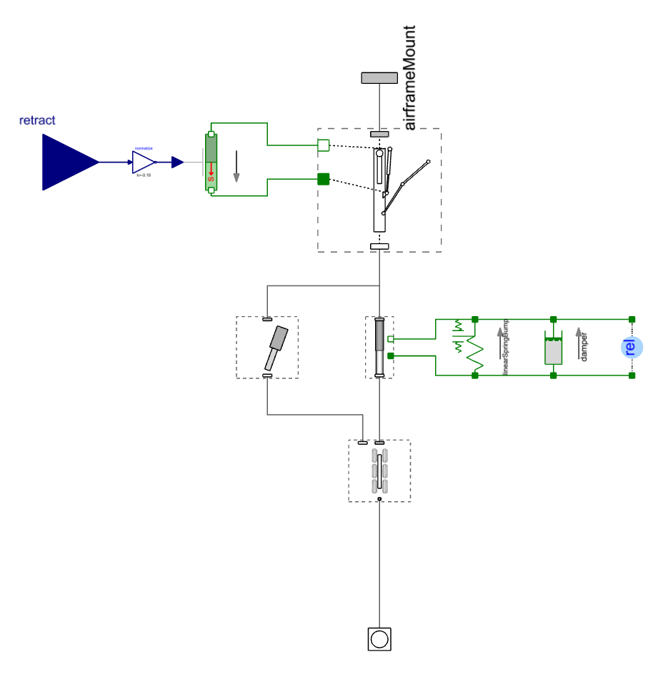
The landing gear template is prepared to be used with an optional aircraft sizing model, where the geometry is affecting and affected by other geometric design decisions in the aircraft.
3D Animation in Modelon Impact
In Modelon Impact, aviation engineers can run simulations covering any scenario of an aircraft taking off or landing in normal or degrading conditions. The models are reusable for a range of investigations whether it is dynamic or static studies of brake control, nose gear steering systems, gear positioning, or stability. The built-in 3D visualization feature of Modelon Impact enables quick visual feedback that the simulation is correct.
Here the landing gear part is used in a dynamic simulation of a landing where one of the aircraft’s landing gear is only partially extended. The simulation shows that it is possible to control the brakes and maintain the stability of the vehicle in this scenario.
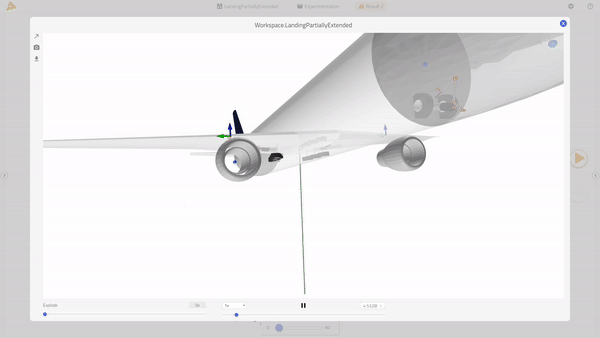
Utilizing the Aircraft Dynamics Library in Modelon Impact helps aerospace engineers model and simulate the safe landing of a commercial aircraft with components from the first touch on the tarmac to breaking and directional control.
